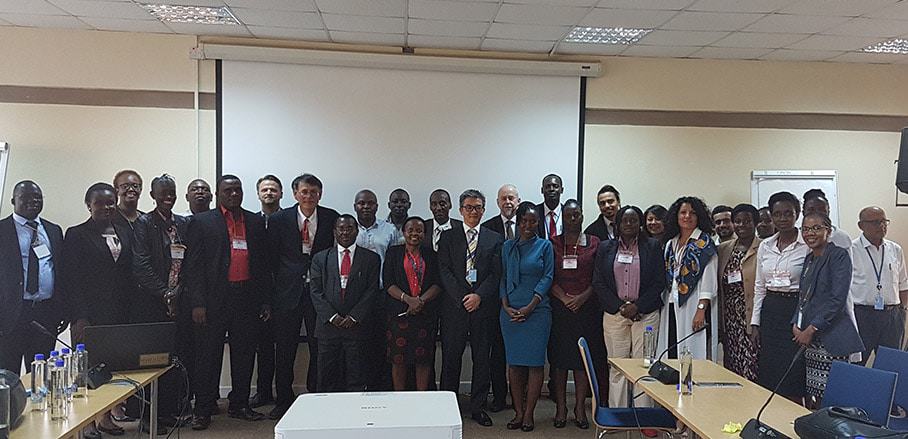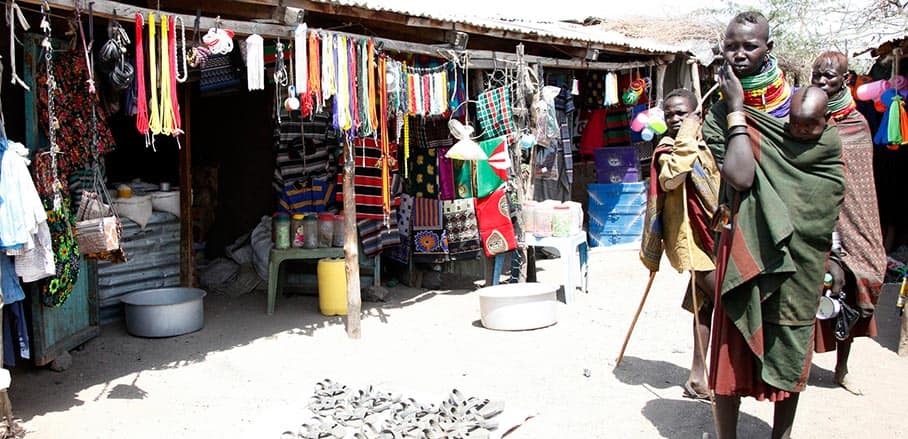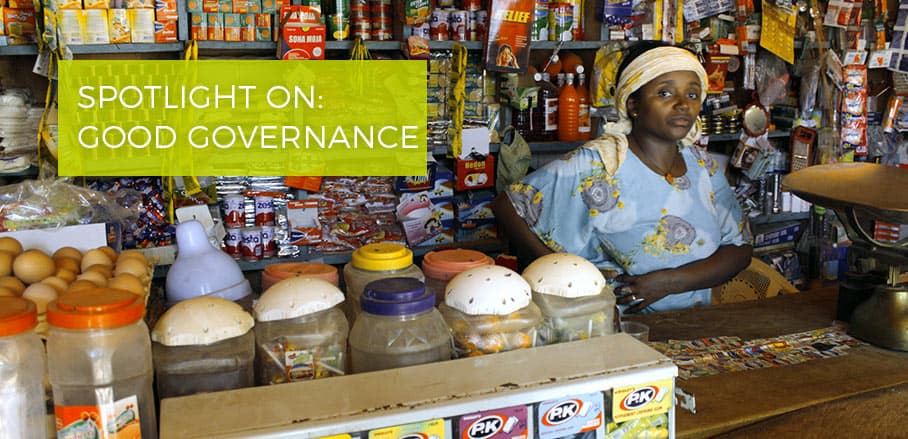UN-Habitat’s Integrated Municipal Finance Programme – Part 1
UN-Habitat promotes sustainable urbanisation globally. The municipal finance programme is fast becoming one of its most critical focus areas. The programme is witnessing an exciting evolution in Kenya that offers lessons for local governments worldwide. Marco Kamiya, UN-Habitat’s Chief of the Urban Economy and Finance Branch describes the challenges cities face in their efforts to advance the sustainable development agenda.
A Tale of Cities
In 2014, UN-Habitat began promoting innovative urban economic and financial policies and strategies with an emphasis on municipal finance. The goal of our programme is to provide an economic and financial analysis[1]UN-Habitat (2017) “Finance for City Leaders Handbook: Improving Municipal Finance to Deliver Better Services”. Kamiya & Zhang Le-Yin eds. perspective to urban planning[2]text. In Kenya, where we are based, we were initially asked to support County Governments in two areas: issuing municipal bonds, and private investment into local projects. It was in 2014 that UN-Habitat and the United Nations system started the work that led to the approval of the New Urban Agenda (NUA) at the Habitat III Conference in Quito, 2016. This conference takes place every 20 years and sets the agenda on sustainable urbanisation.
City leaders need adequate funds to provide local infrastructure and basic services. However, since central government transfers are affected by political cycles, mandates often increase considerably without adequate funding. As a result, the need to mobilise external sources of finance becomes vital for the sustainability of cities. Municipal bonds and private investment in the form of Public-Private Partnerships (PPPs) are two options that local authorities can use to close the gap between revenues and expenditures.
Municipal Bonds and PPPs: The Kenyan Experience
When we visited counties in Kenya, we were surprised to find out that the technical capacity required to implement both tools was absent. The county governments did not have and were not familiar with the credit rating system even at the national level. A credit rating system facilitates the issue of bonds. The Philippines and Mexico, for example, have national systems of credit ratings, whilst some countries like Jordan have a ‘shadow’ (i.e. non-disclosed) credit rating.
In addition, technical expertise was scarce at the county level to monitor and design a PPP operation, with the legal framework and proper decision-making processes at the town, county, and central government levels overlapping in the area of municipal finance. All public institutions seeking to implement PPPs are required to establish internal PPP Nodes which are responsible for the project screening, approval, structuring, and implementation of PPPs. To date, county governments have not established these nodes and while there is a mechanism through the project facilitation fund to finance the procurement of transaction advisors, this resource has yet to be tapped into by the county governments.
The county governments are authorised to issue securities which include treasury bonds, notes, and bills as well as county stock. Before issuing municipal bonds, counties need to demonstrate that they are creditworthy, and that they have the appropriate technical expertise to design bonds. Further, as these securities constitute borrowings by the county governments, their issuance is subject to approval by their respective county assemblies and a guarantee by the national government. This so-called ‘sovereign guarantee’ assures investors that in case of local government default, the central government will repay the bond[3]If central governments provide financial guarantees to local authorities in case of default, then what is the incentive for local authorities to be financially prudent? This is what Ibrahim Mohanna of the Mohanna Foundation in Lebanon said when his organisation did the credit rating of 5 cities in Jordan. Meaning that if central governments come to the rescue of local authorities if and when they fail to pay back their loans, then these are not loans, they are grants from central governments to local authorities. .
PPPs are the mechanism to allow private investors to invest in public projects. The legal framework restricts the public institutions from undertaking PPPs without demonstrating value for money, affordability, or adequate risk transfer to the private party. It is therefore mandatory to prepare a risk matrix that establishes the distribution of risks between the public and the private sides in case of an unforeseen event such as a natural disaster or political turmoil. Who pays for the unfinished works? Who assumes the losses? Those questions must be answered to convince the private sector to invest in local government projects.
The Path to Knowledge
In 2014, we started two major projects on municipal finance in Kenya, supported by Swedish International Development Cooperation Agency (SIDA)—the municipal finance initiative in Kiambu County, and a planning and finance project by the Kenya Railways Corporation. In 2015, funded by the government of Kenya, we implemented a market development project in Homa Bay County. Furthermore, with assistance by the government of Japan, we supported the Kakuma Refugee Camp in Kalobeyei in 2016. We learned valuable lessons from these projects, which are outlined here below.
Kiambu county4text is a middle-sized county bordering Nairobi, the capital of Kenya. It has about 1.5 million people and is growing rapidly. When we started the project, the county government had no registry of local assets, with several areas including a forest with unknown ownership. Alongside this, 40 per cent of residences and commercial areas were informal and unregistered. We supported Kiambu County in a number of areas:
- improving valuation rolls (the listing of properties and owners) in order to improve tax collection,
- providing senior consulting expertise to strengthen county technical staff,
- promoting revenue collection with remote devices in informal areas and connecting the devices to services delivered by the county government,
- integrating municipal finance with local economic development activities, for instance in the waste management sector and tax collection system, and
- automating the county government’s accounting and billing systems. Results were extremely encouraging as revenues doubled between 2012 and 2015 and continued increasing afterwards.
The county government of Kiambu then considered that it was ready for more complex tasks. Together with UN-Habitat worked to develop a draft policy and law to allow for private investment in local infrastructure development projects through leveraging county-owned lands. Further, an analysis of the economic viability of returning investments in infrastructure from development fees included in the issuing of building permits was undertaken. As a result, a framework for the establishment of a local urban infrastructure fund was designed. This public fund (LMC) allows private investment into public projects and thus helps to close the gap between investment needs and financing.
Kenya Railways Corporation (KR)5text is the public agency that manages the train system in Kenya. As preparation for the construction of the Mombasa-Nairobi line was in order, we supported the planning and financing of the project by providing
- the planning and design for some of the train stations,
- training of KR staff on Land Value Capture (LVC) including study tours to Stockholm to learn from the Swedish experience, and
- reports with mechanisms to take advantage of the increased value around the stations and allow for revenue generation based on urban renewal.
The proposal to include LVC was incorporated as a recommendation for the implementation of the train system. It states that KR must coordinate with the counties and central government to make that possible. This reflected a change in KR’s strategy from only maximizing rents from its real-estate assets to leveraging its assets for urban development, which in turn would also increase their revenues over time. The PPP legal framework in Kenya makes provision for the develop-operate-transfer model. This means that a private party is granted the right to develop property adjoining a public infrastructure project and to enjoy the benefits the investment creates. After a period of thirty years, the property is transferred to the public sector.

Staff of Kenya Railways who participated in a workshop on financing urban development.
In Homa Bay County6text in Western Kenya, we were invited by the national government to assist in the design and construction of markets in this rural county. The goal was to promote local economic development and own-source revenue generation by the county government. The market planning was done considering:
- the expected demand and supply of goods and services from rural villages,
- to support the County Government’s revenue regeneration through county-owned markets, and
- strengthening municipal finance management at the county offices.
Currently, the markets are being built and in operation in two sites.
Kakuma Refugee Camp7text is the largest refugee camp in Kenya. In this project, UN-Habitat
- developed a planning proposal to upgrade the camp,
- provided the revenue enhancement scheme, and
- designed the economic scenarios according to the costs of infrastructure.
Subsequently, we performed the cost-benefit analysis for each of those initiatives. In some cases, the costs of hosting the refugees for almost two decades are enormous for the Kenyan economy. The country therefore relies heavily on foreign aid and donors’ support to maintain the camp. We estimated that just by providing working permits to the refuges, the economy would grow by 5 per cent every year in the first decade and will continue growing afterwards.

Kakuma Refugee Camp.
Part 2 of this article will be published shortly.
- UN-Habitat’s Integrated Municipal Finance Programme – Part 2 - 22. August 2019
- UN-Habitat’s Integrated Municipal Finance Programme – Part 1 - 20. August 2019
